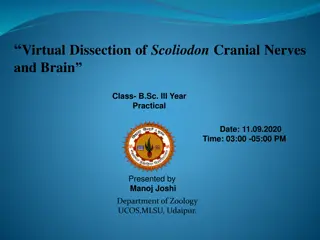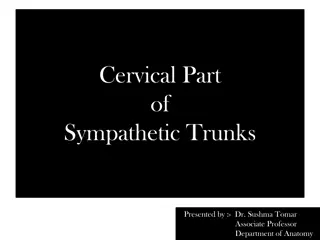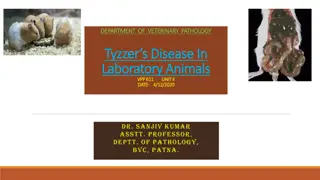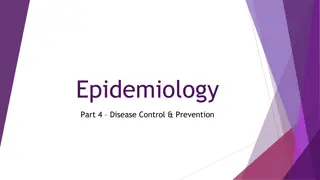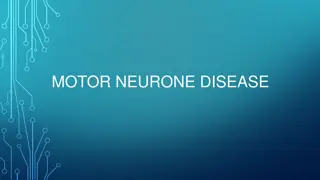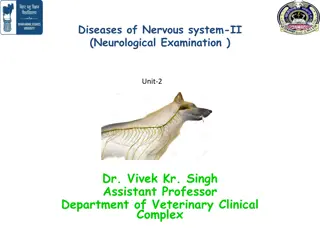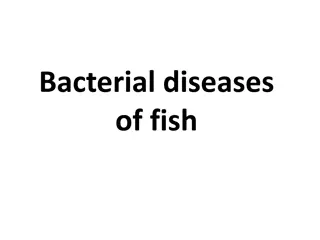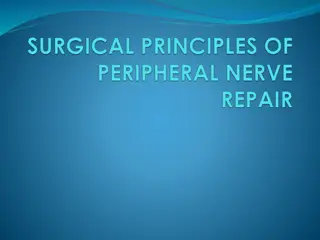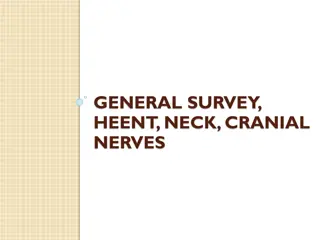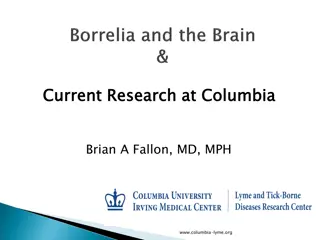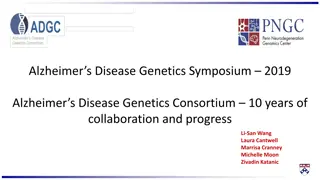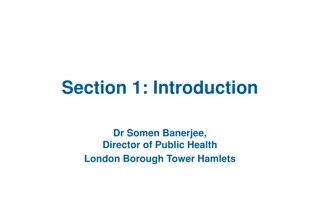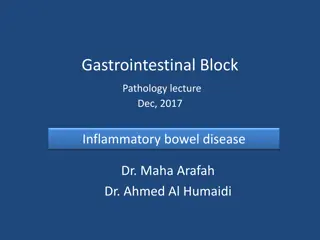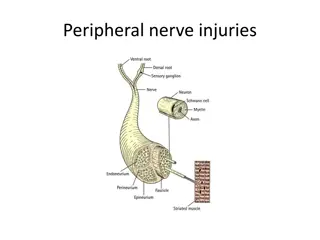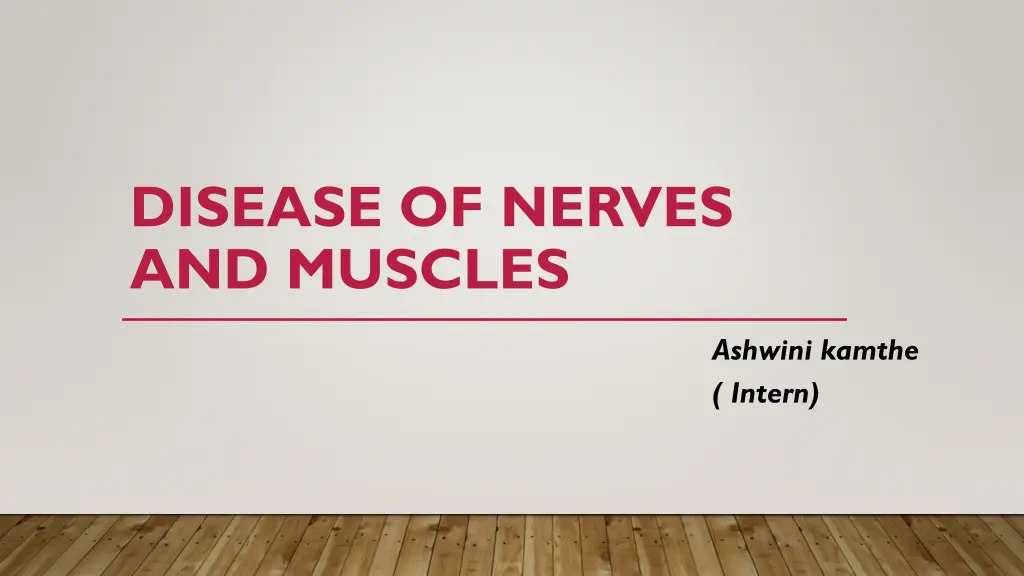
Understanding Trigeminal Neuralgia: Symptoms, Causes, and Management
Trigeminal neuralgia is a neuropathic disorder characterized by sudden, intense, unilateral facial pain. The pain is brief, stabbing, and typically follows the distribution of the trigeminal nerve branches. This condition, also known as tic douloureux, can be triggered by various factors and can be truly agonizing for the individuals affected. Learn more about the clinical characteristics, etiology, and how to manage trigeminal neuralgia effectively.
Download Presentation

Please find below an Image/Link to download the presentation.
The content on the website is provided AS IS for your information and personal use only. It may not be sold, licensed, or shared on other websites without obtaining consent from the author. If you encounter any issues during the download, it is possible that the publisher has removed the file from their server.
You are allowed to download the files provided on this website for personal or commercial use, subject to the condition that they are used lawfully. All files are the property of their respective owners.
The content on the website is provided AS IS for your information and personal use only. It may not be sold, licensed, or shared on other websites without obtaining consent from the author.
E N D
Presentation Transcript
DISEASE OF NERVES AND MUSCLES Ashwini kamthe ( Intern)
DISTURBANCES OF FIFTH CRANIAL NERVE
TRIGEMINAL NEURALGIA TIC DOULOUREUX TRIFACIAL NEURALGIA FOTHERGILL'S NEURALGIA
GENERAL CHARACTERISTICS AGE- 5th-6th decade of life SEX- female> male AFFLICTION FOR SIDE- right> left DIVISION OF TRIGEMINAL NERVEINVOLVEMENT- V3>V2>V1
It is defined as sudden, usually unilateral, severe, brief, stabbing, lancinating, recurring pain in the distribution of one or more branches of the Vth cranial nerve Trigeminal neuralgia also known as prosopalgia or fothergill's disease is aneuropathic disorder characterized by episodes of intense pain in the face, originating from trigeminal nerve
It is a truly agonizing condition, in which the patient may clunch the hand over the face & experience severe, lancinating pain associated with spasmodic contractions of the facial muscles during attacks- a feature that led to use of this term
ETIOLOGY Usually idiopathic Demylination of the nerve Multiple sclerosis Petrous ridge compression Post-traumatic neuralgia Intracranial tumors Intracranial vascular abnormalities
CLINICAL CHARACTERISTICS Manifests as a sudden, unilateral, intermittent paroxysmal, sharp, shooting, lancinating, shock like pain, elicited by slight touching superficial 'trigger points' which radiates from that point, across the distribution of one or more branches of the trigeminal nerve Pain is usually confined to one part of one division of trigeminal nerve Pain rarely crosses the midline Attacks do not occur during sleep
Pain is of short duration, but may recur with variable frequency.In extreme cases, the patient will have a motionless face the frozen or mask like face. Trigger area on the face are so sensitive that touching or even air currents can trigger an episode. 10-12% of cases are bilateral, or occurring on both sides. This mainly seen in cases with systemic involvement include multiple sclerosis or expanding cranial tumor
DIAGNOSIS From a well taken history. CT-scan. MRI Diagnostic nerve block
DIFFERENTIAL DIAGNOSIS MIGRAINE- severe type of periodic headache is persistent, at least over a period of hours and it has not trigger zone. SINUSITIS- pain is not paroxysmal, in this pain is persistent, associated nasal symptoms. DENTAL PAIN- localized, related to biting or hot or cold foods, visible abnormalities on oral examination. Tumors of nasopharynx in this similar type of pain is produced, manifested in the lower jaw, tongue and side of the head with associated middle ear deafness. This complex lesion is called TROTTER'S syndrome.
TREATMENT . MEDICAL First line of treatment is: CARBAMAZIPINE ( anticonvulsant) Second line of treatment is: BACLOFEN, LAMOTRIGINE,OXCARBAZEPINE, PHENYTOIN,GABAPENTIN, PREGABALIN, SODIUM VALPROATE. Low dose of Antidepressants such as AMITRYPTILINE are thought to be effective in treating neuropathic pain. Antidepressant are also used to counteract a medication side effect.
SURGICAL INJECTION OF NERVE WITH ANESTHETIC AGENT ALCOHOL INJECTION IN GASSERIAN GANGLION PERIPHERAL GLYCEROL INJECTION PERIPHERAL NEURECTOMY( NERVEAVULSION) MICROVASCULAR DECOMPRESSION -PERCUTANEOUS RHIZOTOMIES -GAMMA KNIFE RADIOSURGERY
AURICULOTEMPORALSYNDROME (FREY'S SYNDROME ,GUSTATORY SYNDROME) It is an unusual phenomenon, which arises as a result of damage to the auriculotemporal nerve and subsequent reinnervation of sweat glands by parasympathetic salivary fibers.
ETIOLOGY Some surgical operation i.e removal of parotidtumor or the ramus of the mandible. After a considerable amount of time following surgery, during the damaged nerve regenerates ,the parasympathetic salivary nerve supply develops, innervating the sweat glands, which then function after salivary, gustatory or psychic stimulation.
CLINICAL FEATURES Patient typically exhibits flushing and sweating of the involved side of the face ,chiefly in the temporal area, during eating. Profuse sweating may often be evoked by the parenteral administration of pilocarpine or eliminated by the administration of atropine.
There is somewhat a similar condition known as crocodile tears in which patient exhibits profuse lacrimation when food is eaten (hot and spicy)
TREATMENT Intracranial division of the auriculotemporal nerve 1% glycopyrollate Lotion or cream. Injection of Atropine TEST STARCH IODINE TEST
BURNING MOUTH SYNDROME Burning of mucosa without visible mucosal lesions Female prediction Tongue, lips, palate affected. CAUSES Local Dry mouth, geographic tongue, Lichen planus, trauma to Mucosa, GERD, sensory nerve damage. Systemic- Vitamin B12, folate deficiency, ACE inhibitors, Sjogrens syndrome , depression, anxiety, dibetes, menopause. Treatment Antidepressants Or dietary supplements
BELLS PALSY (SEVENTH NERVE PARALYSIS,FACIAL PARALYSIS) INTRODUCTION: Bell's palsy is a form of facial paralysis resulting from a dysfunction of the cranial nerve VII (the facial nerve) causing an inability to control facial muscles on the affected side. Several conditions can cause facial paralysis eg. Brain tumor, stroke, myasthenia gravis.. If no specific cause can be identified, the condition is known as Bell's palsy DEFINITION: Bell's palsy is defined as an idiopathic unilateral facial nerve paralysis, usually self-limiting.
GENERAL CHARACTERISTICS INCIDENCE- 20: 1,00,000 AGE- middle age group SEX- female> male
ETIOLOGY Cerebrovascular disease, multiple sclerosis, syphilis, HIV Between nucleus and geniculate gangion: Fracture base of skull, post cranial fossa tumors, sacroidosis Between geniculate ganglion and stylomastoid canal: Middle ear infection, ramsay threat sign, mastoiditis. Branch of facial nerve (extra cranially): Local anesthesia, parotid gland surgery, TMJ arthroscopy, facial asthetic surgery, facialtrauma
ASSOCIATED SYNDROME MELKERSON ROSENTHAL SYNDROME( a triad of fissured tongue, chelities granulomatosa and cranial nerve 7th paralysis) BILATERAL FACIAL PARALYSIS is rare may be due to acute idiopathic polyneuritis, sarcoidosis, post cranial fossa tumors.
SIGNS AND SYMPTOMS Expressionless face Forehead is unfurrowed. Patient is unable to cross eye on that side, any attempted closure causes rolling of eye upwards(Bell's sign). Tears tend to overflow (epiphora). Corner of the mouth droops. Saliva dribbles and food collects in the vestibule because of paralysis of buccinator. Altered taste sensation
TREATMENT PHYSIOTHERAPY should be started as early as possible, consists of electrical stimuli by galvanism, gentle massage and facial exercise. MEDICATION Vasodilator drugs Histamine Flushing dose of nicotine acid Surgical decompression
DISTURBANCES OF NINTH CRANIAL NERVE
GLOSSOPHARYNGEAL NEURALGIA pain may be as severe and excruciating rare condition characterized by severe, paroxysmal episodes of pain mainly localized to the external ear canal, pharynx, and tongue, usually caused by a neurovascular conflict between postero-inferior cerebellar artery and ninth cranial nerve
CLINICAL FEATURES No gender predilection middle-aged or older persons sharp, shooting pain in the ear, the pharynx, the nasopharynx, the tonsil, or the posterior portion of the tongue unilateral The patient usually has a 'trigger zone' in the posterior oropharynx or tonsillar fossa- swallowing, talking, yawning, or coughing
TREATMENT resection of the extracranial portion of the nerve or intracranial section Periods of remission with subsequent recurrence are common in this disease
DYSTROPHIES Muscular dystrophy is a primary, progressively degenerative disease of skeletal muscle. . The basic disorder lies within the muscle fibre itself, since the muscular nerves and nerve endings at the neuromuscular junction are normal.
SEVERE GENERALIZED FAMILIAL MUSCULARDYSTROPHY (PSEUDOHYPERTROPHIC MUSCULAR DYSTROPHY OF DUCHENNE) Clinical Features before the age of 6 years and rarely after 15 years inability to walk or run, the children falling readily. muscular enlargement and weakness muscles of the extremities are generally those first affected, but even the facial muscles may be involved ultimately proceeds to atrophy
limbs appear flaccid waddling gait muscles of mastication, facial and ocular muscles, and laryngeal and pharyngeal muscles are usually involved only late in the course of the disease rapidly progressive muscle disease usually beginning in early childhood, presenting strong familial transmission usually through unaffected females occurring predominantly in males with or without pseudo hypertrophy most common form of muscular dystrophy
Treatment. There is no treatment for this disease. the disease remains incurable die by the time they are 30 years of age, usually as a result of cardiopulmonary failure
MILD RESTRICTED MUSCULAR DYSTROPHY (FACIOSCAPULOHUMERAL DYSTROPHY, LANDOUZY- DEJERINE DYSTROPHY) slowly progressive proximal myopathy . primarily involves the muscles of the shoulder and face has a weak familial incidence frequently presents long remissions and sometimes complete arrests
CLINICAL FEATURES 2-60 years-majority of cases is in the first two decades of life Frequency of occurrence is higher in males earliest signs of the condition may be inability to raise the arms above the head and inability to close the eyes even during sleep as a result of weakness of facial muscles lips develop a characteristic looseness and protrusion which have been described as 'tapir-lips', a part of the 'myopathic facies', and the patients are unable to whistle or smile.
TREATMENT no treatment for the disease temporary periods of remission or even complete arrest possibility of cardiac failure is always present
MYOTONIAS failure of muscle relaxation after cessation of voluntary contraction Three chief forms: 1. dystrophic, 2. congenital, 3. acquired myotonia
DYSTROPHIC MYOTONIA (MYOTONIC DYSTROPHY DYSTROPHIA MYOTONICA) steadily progressive, familial, distal myopathy with associated weakness of the muscles of the face, jaw and neck, and levators of the eyelids, a tendency for myotonic persistence of contraction in the affected parts, and testicular atrophy autosomal dominant characteristic
CLINICAL FEATURES Atrophy of muscles is a characteristic feature - muscles of the hands and forearms Alterations in the facial muscles are one of the prominent features of the disease masseteric atrophy produces a narrowing of the lower half of the face which, with the ptosis and generalized weakness of the facial musculature, gives the patient a characteristic myopathic facies' and 'swan neck muscles of the tongue commonly show myotonia.
testicular atrophy, which is so common as to be considered an integral part of the syndrome; Cataracts-even in a high percentage of young patients; hypothyroidism with coldness of extremities, slow pulse and loss of hair functional cardiac changes
CONGENITAL MYOTONIA (THOMSEN'S DISEASE, MYOTONIA CONGENITA) early in childhood. difficulties in learning to stand and walk generally severe affects all skeletal muscles, especially those of the lower limbs Muscular contraction induces severe, painless muscular spasms, actually a delay in relaxation.
TREATMENT There is no specific treatment of the disease, but the prognosis is good some regression of the disease occurs in occasional patients
ACQUIRED MYOTONIA spasms of muscles more intense than those occurring in typical myotonia. If these spasms are intermittent, the condition is called clonus (myoclonic contractions); if constant, the term trismus is applied (myotonic contractions)
MYESTHENIA Myasthenia is an abnormal weakness and fatigue in muscle following activity. constitute a group of diseases in which there is a basic disorder of muscle excitability and contractility 1. myasthenia gravis 2. familial periodic paralysis 3. aldosteronism It is an acquired autoimmune disorder.
AETIOLOGY Idiopathic in most patients Autoimmunity The antibodies in myasthenia gravis are directed toward the acetylcholine receptor (at the neuromuscular junction of skeletal muscles)
CLINICAL FEATURES adults -middle age group predilection for women. rapidly developing weakness in voluntary muscles following even minor activity muscles of mastication and facial expression are involved before any other muscle group difficulty in mastication and in deglutition and dropping of the jaw Speech is often slow and slurred
Disturbances in taste sensation occur in some patients Diplopia and ptosis, along with dropping of the face, Sorrowful appearance to the patient neck muscles may be so weak that the head cannot be held up without support Patients with this disease rapidly become exhausted, lose weight, become further weakened and may eventually become bedfast Death frequently occurs from respiratory failure



